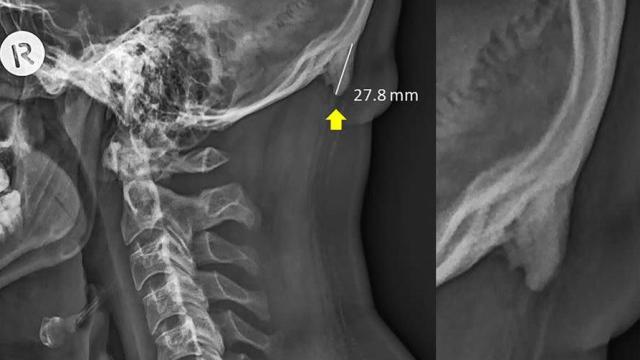You might have heard recently, from publications like the Washington Post, NBC, and of course, Newsweek, that some people are growing a ‘horn’ or a ‘spike’ out of the back of their skull from using a smartphone too much.
For anyone who was excited about gaining a futuristic protuberance, I’m sorry to disappoint you, but the science isn’t quite solid here.
Studies by Australian researchers David Shahar and Mark Sayers at the University of the Sunshine Coast spread across Australian media, with headlines like “Younger generations are growing horns in the back of their head.”
These papers have now been cited by journalists around the world. The researchers studied abnormally large bony projections that seem to grow from the base of some people’s skulls. The resulting news coverage claims that increased screen time has caused more of these growths in younger people.
But these studies don’t actually prove a connection between phone use and the size of these so-called ‘horns’. One of the frequently cited papers says it in the abstract: “We hypothesize EEOP [enlarged external occipital protuberance] may be linked to sustained aberrant postures associated with the emergence and extensive use of hand-held contemporary technologies, such as smartphones and tablets.”
It’s a hypothesis. Not a proven hypothesis. Most people who share the article are probably surprised that we even have such a piece of bone in our head at all, let alone that some people have an enlarged version.
What do the papers actually say? Well, one demonstrates that these projections seem to be larger for certain samples of younger people (like 18- to 30-year-olds). Another studied just four teenagers with such growths, noting that ‘mechanical influences’, like stress on joints, “are a potential cause for this phenomenon in this sample.” The third compared the size of the “horn” to study participants’ age, sex, and how far forward their head was compared to the spine.
For that third study, the researchers crunched the numbers, and reported that a lot (35 to 40 per cent) of the young people that they studied seemed to have enlarged bone growths at the back of their head, and that males tended to have larger bumps, though graphs presented in the study don’t actually seem to support that second conclusion, as University of Wisconsin-Madison anthropologist John Hawks points out in a blog.
But, perhaps most importantly, they did not perform tests comparing those who used smartphones to a control group that didn’t or who used smartphones less. That means you can’t blame the growths on phones.
There are other potential issues, too. The New York Times pointed out that data came from people who were already in enough pain to visit a chiropractor, according to that paper—another potential reason why so many people had the growths.
Even if the papers did find some sort of correlation between phones and these abnormally large bone growths, others would still need to replicate the work before we could be confident in the conclusions.
Sure, it’s an interesting hypothesis, and if bad posture is leading to abnormal bone growth, that’s bad—and, yes, we already know that there are physical consequences to sitting at screens all day, like neck and shoulder pain.
But if we’re going to panic about smartphone-induced bone growth in our skulls, we should do so based on studies that actually focus on proving this hypothesis.
